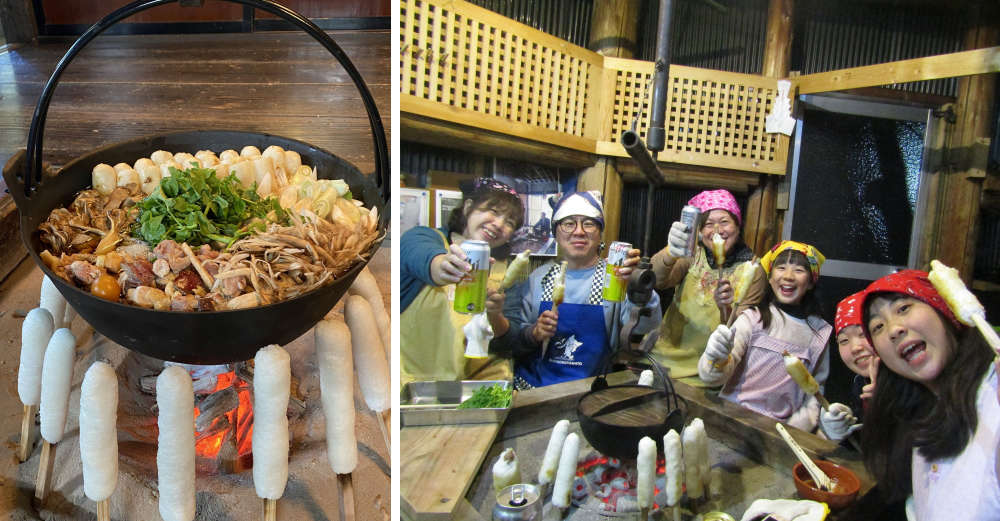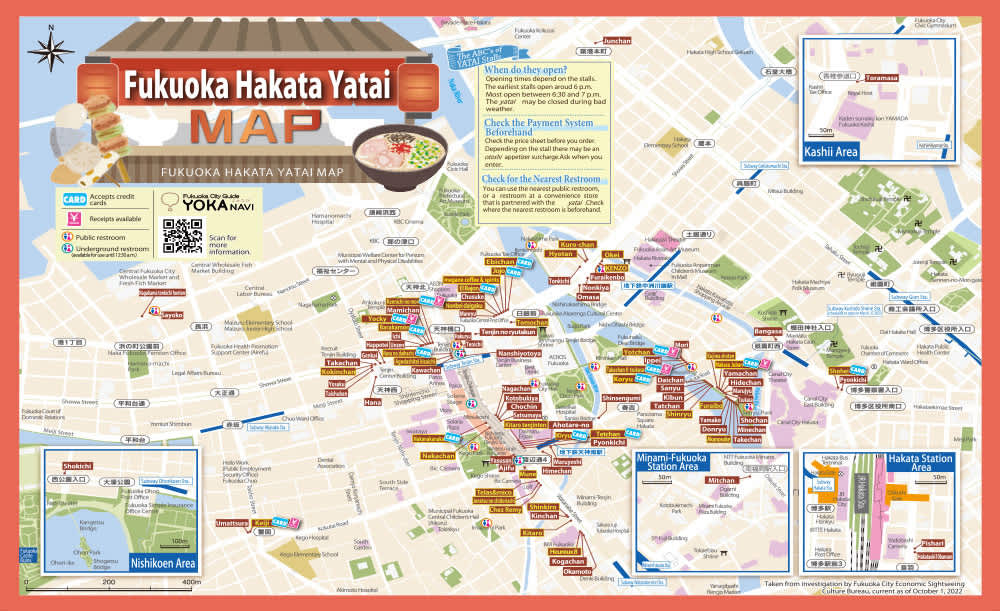One of the best parts of visiting another country is interacting with local people, but it can be hard to know where to start when you consider potential language barriers and Japan’s famously reserved culture. However, context is everything—and there are a lot of great ways to engage with locals if you know where to go! These three tips will enrich your next trip to Japan and give you a more fulfilling experience of the local culture.
Visit Yatai Food Stalls (Fukuoka)
Who doesn’t love street food? Yatai—or outdoor food stands—are a ubiquitous part of Japanese festivals, but in Fukuoka City, they are also an essential and delicious part of the food scene year-round! As evening falls, around 100 food stalls come to life, serving drinks and mouth-watering cuisine from around 6 pm to 2 am (https://www.japan.travel/en/spot/273/) Sitting down in one of the bustling stalls, you’ll find yourself shoulder to shoulder with 7-10 other customers in a relaxed atmosphere, making it the perfect place to meet locals and other visitors. Hearty staples like ramen and yakitori (grilled meat skewers) abound, but international cuisine can also be found, such as at the popular French stand Chez Rémy. In fact, there are so many delicious options to discover that we recommend making an evening of yatai hopping and finding your own favorites! (https://yokanavi.com/en/yatai)
Check out the map below and pick out which yatai you want to visit: https://yokanavi.com/assets/uploads/2022/10/yataimap_eng.pdf
Next summer, swimming enthusiasts from all over the world will also gather in the Fukuoka area. In July, Fukuoka City will host the FINA World Championships, and in August, the FINA World Master’s Championship will be hosted between Fukuoka City, Kumamoto City, and Kagoshima City.
Check out the details here:
https://www.fina-fukuoka2022.org/en/
Take a Karate Lesson (Okinawa)
Stunning sub-tropical Okinawa is the birthplace of karate, and it remains an amazing place to practice this famous martial art—or try it for the first time! Whether you’ve done karate for years or have never tried it before, taking a lesson or joining a practice is a great way to meet local Okinawans and learn about their culture and traditions. With over 400 dojos, there are lots of different ways to get involved (https://visitokinawajapan.com/travel-inspiration/journey-through-okinawan-karate) There’s something for every skill level as well, with introductory experiences for beginners (some in gorgeous beach settings!), private lessons, and training courses for experienced practitioners (http://okic.okinawa/en/training) Learning karate in Okinawa will give you a new appreciation for the island’s ancient culture and provide a chance to meet and learn directly from local people.

Get in touch with Ama-divers in Ise-Shima Fishing Village (Mie)
You may have heard of Japan’s Ama divers—women who dive into the ocean to extraordinary depths (some as deep as 65 feet!) without the aid of scuba equipment. The techniques they use go back over 2,000 years, making Ama divers the subject of both folklore and history. While their number has declined over time, Ise-shima in Mie has the most Ama-divers today, and there are opportunities for visitors to learn about their way of life by speaking with them directly with the aid of bilingual staff (https://voyapon.com/ama-divers-ise-shima-national-park-japan) Eat fresh seafood in a traditional Ama hut while learning about the divers’ lives (https://www.japan.travel/en/japans-local-treasures/ama-mie-prefectures-women-of-the-sea), or—for the more adventurous—join an Ama diver for a free dive and experience the techniques they use for yourself (www.japan.travel/national-parks/parks/ise-shima/see-and-do/plunge-into-the-beautiful-waters-of-ise-shima-with-skilled-ama-free-divers) While Ama divers primarily harvest shellfish, they are most associated in the popular imagination with pearl diving, thanks in part to Mikimoto, and the Mikimoto Pearl Island and Mikimoto Pearl Museum are also essential stops while you’re in the area (www.japan.travel/en/spot/1203)

Stay at a minshuku and experience life in rural Japan (Akita)
Another great way to connect with local people is to spend the night at a minshuku. Somewhere between a hostel and a bed and breakfast, minshuku are family-run guesthouses that offer simple accommodations for reasonable prices. Sleeping in a tatami room, folding up your own futon bedding, and eating seasonal dishes in the communal dining room will give you a glimpse into everyday life which you won’t get at a more commercialized hotel. In Odate, Akita, you can stay at a farmhouse and participate in life on the farm—helping around the fields, harvesting fruit and vegetables, and making special local foods together with hosts, such as kiritampo or pickled vegetables (www.japan.travel/experiences-in-japan/en/220)





















































